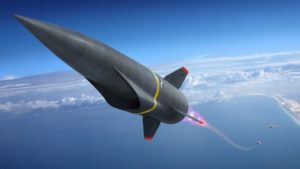The Marine Corps is in discussions with the Defense Department’s research community to potentially field land-based hypersonic weapons in the future, according to a senior official.
“I haven’t given up on the Marines yet. The Army, the Navy & the Air Force are moving out aggressively with hypersonic systems, but we are also talking to the Marines about possible applications of ground launched hypersonic capabilities,” Mike White, assistant director for hypersonics in Office of the Under Secretary for Defense for Research and Engineering, said Thursday during the Defense One Tech Summit held online.

White explained the Marine’s agility could bring advantages to the weapons that are shot from very long ranges and hit targets quickly, traveling at speeds between Mach 5 and Mach 20.
“The Marines bring agility to the land campaign. They are an agile force. They can be in certain places with a relatively small footprint relatively quickly. So that agility and flexibility allows for a number of different advantages,” White said.
“And so there’s some conversations happening between DARPA and the Marines in particular to talk about the potential transition of land-based hypersonic capability to the Marines. And it’s being discussed as part of the opportunity space for future application of hypersonic weapons,” he added.
In the Pentagon’s hypersonic weapons efforts, the Navy is taking the lead in developing a new Common Hypersonic Glide Body (C-HGB) to be used across all the services. The Navy also plans to buy a common missile stack rocket booster to lift the glide body to the edge of space and the glide body plus the booster combined make up the all-up round that both the Army and Navy will use. The Army is set to oversee production of the glide body.
Separately, the Air Force is planning to use the same C-HGB, but a different launching system, among other Air Force hypersonic weapon programs.
In March, the Defense Department said it completed a successful flight test of the C-HGB, jointly conducted by the Army and Navy. The Pentagon plans to field a hypersonic missile in the early-to-mid 2020s (Defense Daily, March 3).